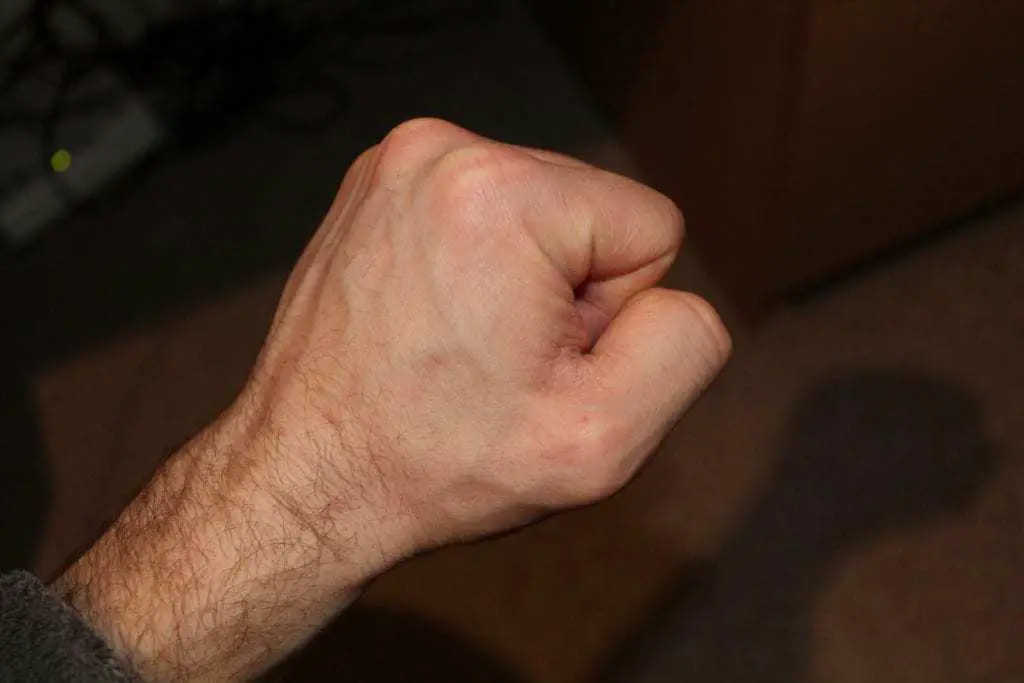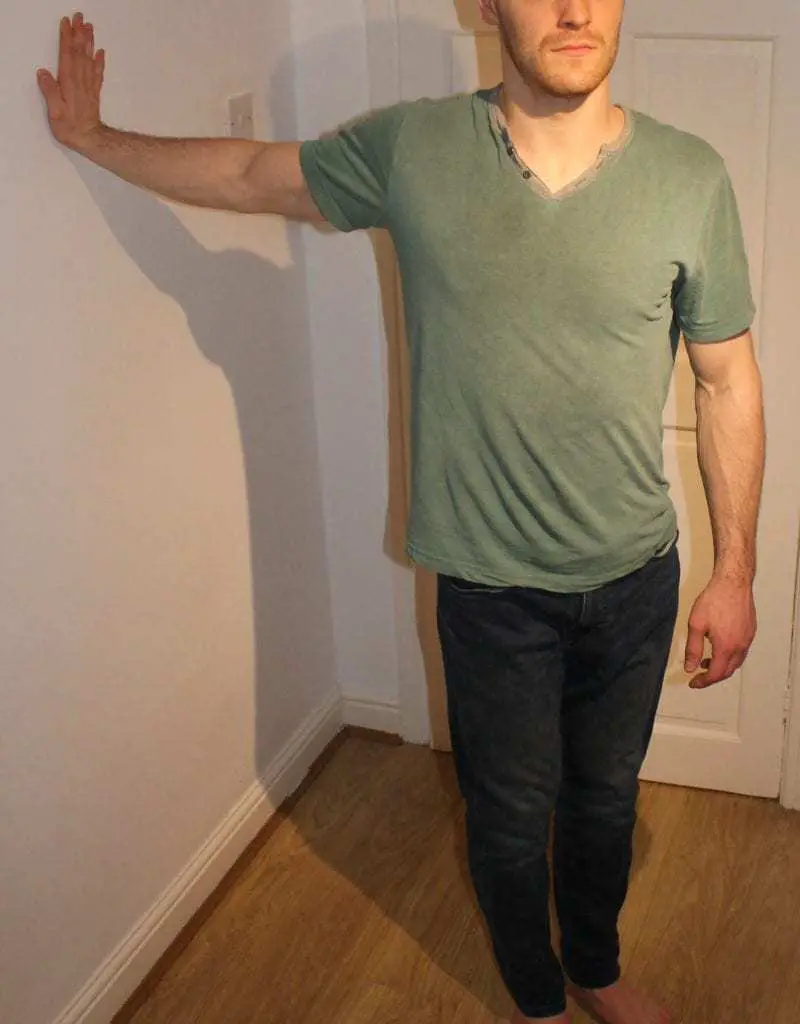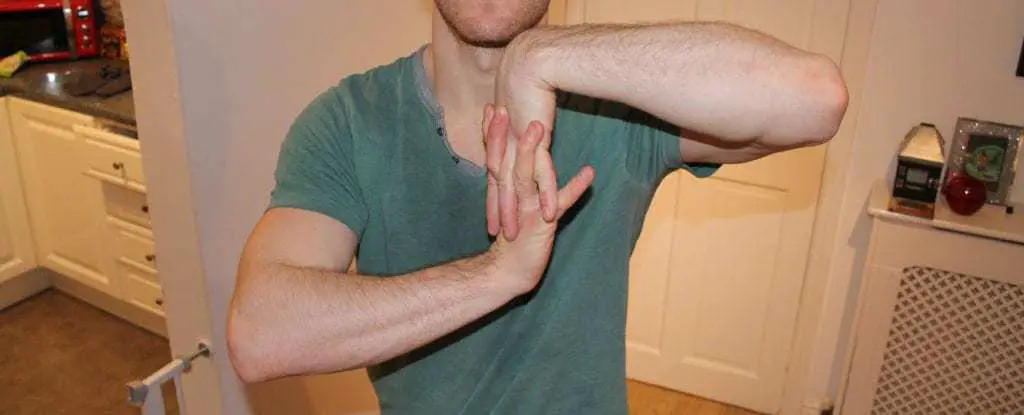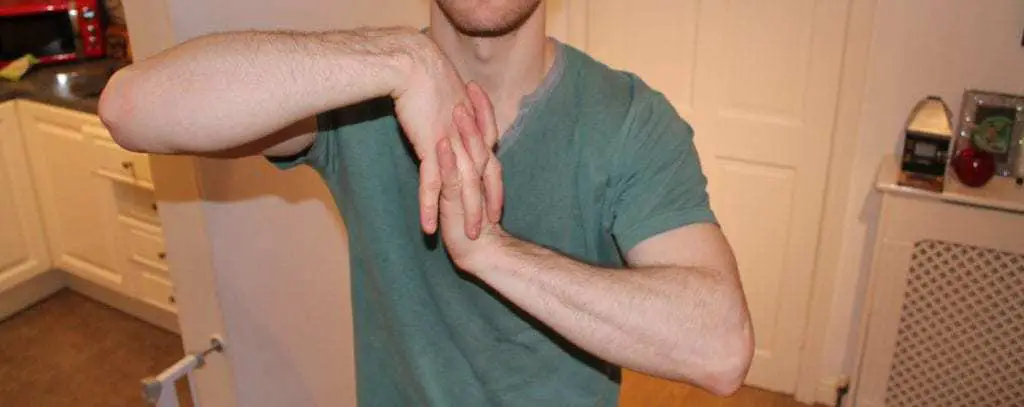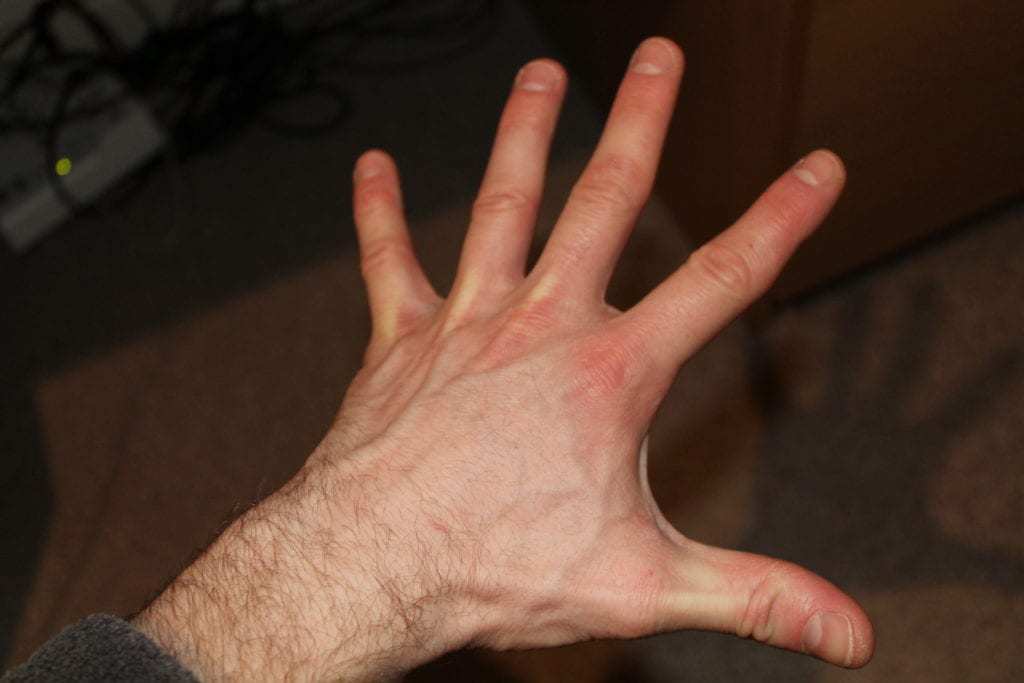
It’s no secret that rock climbing and bouldering whether indoor or outdoor can affect your hands. You may experience injuries in your joints or just soreness in your fingers due to muscle growth and overuse of gripping. Your skin may also feel very sensitive – running your hands under hot water after climbing can sometimes feel unbearable for me. These hand related problems are very common in most types of climbing. Bouldering really seems to affect my hands and forearms (or at least it used to) – the skin on my hands would be very sensitive directly after and the muscles would ache for days afterwards. Sometimes I would find it hard to even pick up and write with a pen. Well, that was until I had the thought: “How do you soothe your hands after rock climbing?” So I did some research, and after finding a few different ways I can honestly say my hands aren’t as sore as they used to be after a session, and the skin on my hands is so much better.
So, what’s the best way to soothe your hands after rock climbing? The best way to soothe your hands after a climbing session is by keeping them clean, moisturised, and submerged in ice many times a day.
Here’s the full list to help you:
- Wash all the chalk off straight away and remove all the gunk from every crevice by using a finger nail brush or similar. Dry your hands thoroughly with a clean towel.
- Complete a simple warm down session straight after you’ve been climbing specifically for your hands.
- Use a balm or lotion for your hands – I use climbOn’s lotion bar – to moisturize, soothe and heal the skin.
- Over the next few days you can submerge your fingers and palms in ice water for several minutes at a time to encourage your muscles to heal.
- Get your partner, a family member or close friend to massage your fingers and forearms – deep tissue massages, again, promote healing into damaged muscles.
- A good diet will also reduce inflammation in your sore muscles and therefore decrease the amount of pain you’re in.
- You can stretch your finger muscles out every now and then to prevent your hands from being as sore in the future.
- Prepare your hands before you climb by trimming your nails so you don’t catch and rip them on any holds.
- You should also use a lotion or cream on them before you climb – don’t use a greasy salve that contains wax or coconut oil this time.
- Keep yourself hydrated – dehydrated skin is more vulnerable to cracks and tears! If your hands end up bleeding through your session, wash the blood away, apply antiseptic cream, and cover up the wound. Then decide whether you should go back on the wall or not.
Read on for more detailed information I’ve outlined surrounding the paragraph above.
Page Jumps
- 1. Wash the Chalk Off Your Hands After the Session
- 2. Complete a Warm Down for Your Hand Muscles
- 3. Use a Balm or Lotion to Moisturize After Your Session
- 4. Submerge Your Hands in Ice
- 5. Promote Muscle Healing with a Massage
- 6. Think About Your Diet
- 7. Stretch Your Fingers
- 8. Prepare Your Hands Before You Climb
- 9. Keep Yourself Hydrated
- 10. What to do if You Bleed
- Related Questions
1. Wash the Chalk Off Your Hands After the Session
Chalk is specifically used when we climb to absorb moisture from your hands so that you aren’t as likely to slip when you grab a hold. If you don’t wash chalk off your hands you’ll allow it to keep doing its job – absorbing moisture – which means your hands are likely to dry up. This allows for your skin to crack a lot easier.
You should also wash the chalk off your hands for a very simple reason: hygiene. You’ve just been putting your hands all over climbing holds that have probably have many other climbers sweaty and/or dirty hands all over them. Not everyone washes their hands after going to the bathroom and going on the climbing wall, so let’s get the gunk off yours. This, again, is good for your hands as it helps maintain your skin to do its job correctly.
2. Complete a Warm Down for Your Hand Muscles
After you’ve been climbing and done any other activities such as using the fingerboard, you should do a few exercises to warm down the muscles in your hands and forearms to reduce the soreness you’ll feel in the next few days. Warming down muscles also promotes healing and muscle growth.
To warm down your finger and forearm muscles there are a few exercises you can do. These are finger flexes, a finger and forearm stretch using a wall, and the forearm water wave.
Finger Flexes
Simply open your hand as wide as possible. Then, very slowly make a fist with your hand as tight as possible. Then, very slowly open your hand as wide as possible again. Repeat this 10 times.
Finger and Forearm Stretch
On the climbing wall or any other right-angled wall, open your hand and stretch your arm straight on the wall. Turn your body away from your arm that’s being stretched, keeping the arm in the same place. Don’t overstretch as you may cause an injury. Just stretch your arm enough to feel it.
Forearm Water Wave
Not actually sure what this is called so I’ve made up the name. Catchy right…? Yea I didn’t think so either! The forearm water wave is where you link your fingers, push out your arms in front of you in a horizontal fashion and use your forearms to make a wave like motion very slowly.
3. Use a Balm or Lotion to Moisturize After Your Session
Once you’ve washed off the chalk, cleaned your grubby climbing hands from the session and then warmed your muscles down, you should moisturize your palm and fingers with a balm, oil or lotion. I like to use coconut oil on a night because it smells nice and it seems to really help moisturize my skin.
Now, I’ve tried a few different climbing balms as I have seriously dry skin on my hands. The best I’ve found is actually one of the more affordable ones from climbOn. It’s more than half the price of the one from Climbskin and I think it does just as good of a job.
If my hands are really crusty and dry then I’ll bring out the big guns: petroleum jelly (vaseline). I cover my hands in this and put latex gloves on for about 20 minutes. Then I take them off and repeat this for a total of 3 times. You’ll be amazed at how much smoother your hands are after doing this.
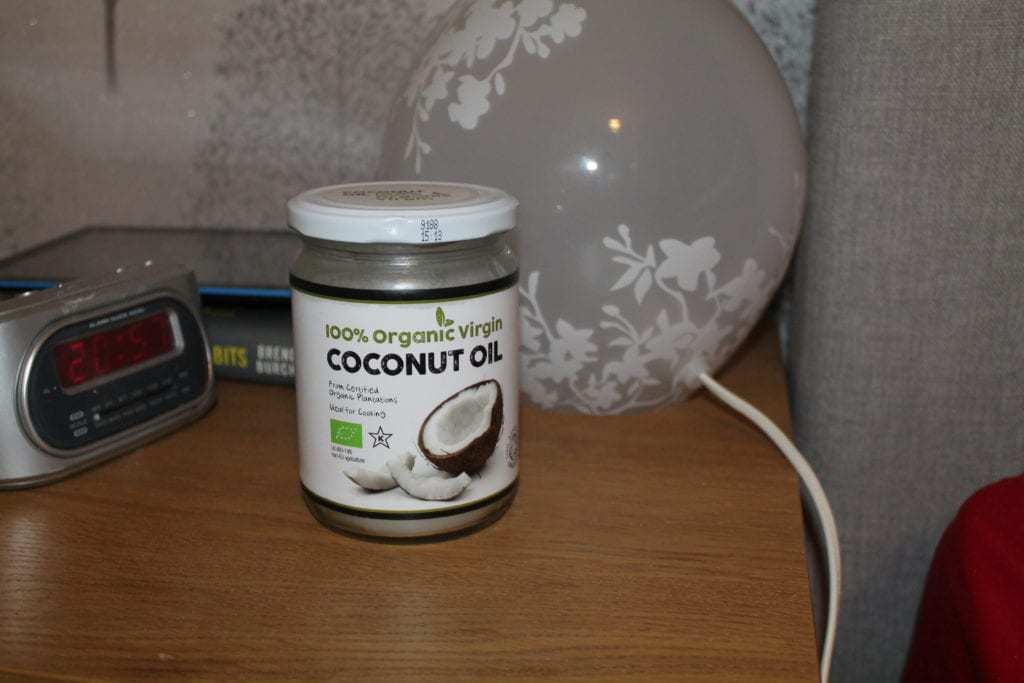
4. Submerge Your Hands in Ice
If you’re hands aren’t feeling too dry try submerging your hands in ice water.
For the next few days after your climb, your hand muscles and the sensitive skin around them will need some R and R. Help them recover by using the age old method of ice.
Ice is known to help muscles recover a lot quicker, especially when used directly after a workout. Submerging your hands in a bucket of ice doesn’t feel very comfortable to do, but if you start doing it more and more you’ll get used to it.
5. Promote Muscle Healing with a Massage
If you can get someone you know to massage your hands and forearms for you after you’ve climbed, this can really help the recovery of your muscles. Whenever I’ve had a climbing session, I’ll usually ask my partner to massage my forearms because they sometimes get incredibly sore. Every now and then she does it for me and I feel much better over the next few days than I would if she didn’t give me a massage usually.
6. Think About Your Diet
Your diet 100% affects the durability and resilience of your skin. It also affects the health of your skin. If you’re eating a diet that includes hardly any minerals and/or nutrients into your body, you may find that this affects your skin to heal and your muscles to repair. A diet full of fruits, vegetables and healthy proteins is very good at promoting healing and repair.
7. Stretch Your Fingers
Over the next few days after you’ve been climbing you should stretch your fingers every now and then. This keeps your fingers flexible which is very good for climbing, and it also increases the blood flow to your fingers which encourages that area to heal. I stretch my fingers in the morning when I wake up and just before I go to bed every night. You can use the finger and forearm exercises mentioned in this article.
8. Prepare Your Hands Before You Climb
Before you climb you should trim your nails to lessen the chance that they’ll catch on something. If you have flaps of skin hanging off your hand you should try to cut them off. If needs be you can tape certain areas of your hand if they look like they’re about to cause you problems when you’re on the climbing wall.
Around an hour before you climb you should moisturize your hands with a lotion that isn’t oily and doesn’t contain some form of wax. Oil and wax greases up your hands, which is good for them usually but this may ruin the climb you’re having an hour later because your hands will be more slippery.
9. Keep Yourself Hydrated
If you aren’t drinking enough water your skin will be more likely to crack because it will be more dry. Being hydrated also improves your skin’s ability to heal. Skin is also more resilient for those who drink more water than those who are found to be dehydrated. Water also helps decrease muscle soreness because it helps repair muscles.
10. What to do if You Bleed
If you bleed it’s probably time to get the first aid kit out. You’ll need some form of antiseptic and something to cover the open wound. Wash your hands thoroughly first if possible. If the wound isn’t very big you may need to apply a band-aid/plaster and wrap climber’s tape around the band-aid which helps reduce the likelihood that it will fall off your hand if you want to keep climbing.
If the wound is bigger you may need a bandage or to see someone about getting stitches. Don’t keep climbing on the wall for 2 reasons. Other climbers don’t want to touch your blood and you don’t want the disgusting bacteria that’s on those holds to get into your open wound and infect it.
Now that you’ve read this article you might also be interested in reading how to safely return to climbing after an injury.
Related Questions
Is rock climbing bad for your hands? Rock climbing is not bad for the joints in your hands. This was shown in a study comparing 27 recreational climbers to 35 non-climbers.
Does rock climbing make your hands bigger? Climbers have been shown to (on average) have bigger bones in their hands than usual. A study showed that rock climbers had a bigger cross-sectional area on the bones in their hands and a greater total width than the average man.

